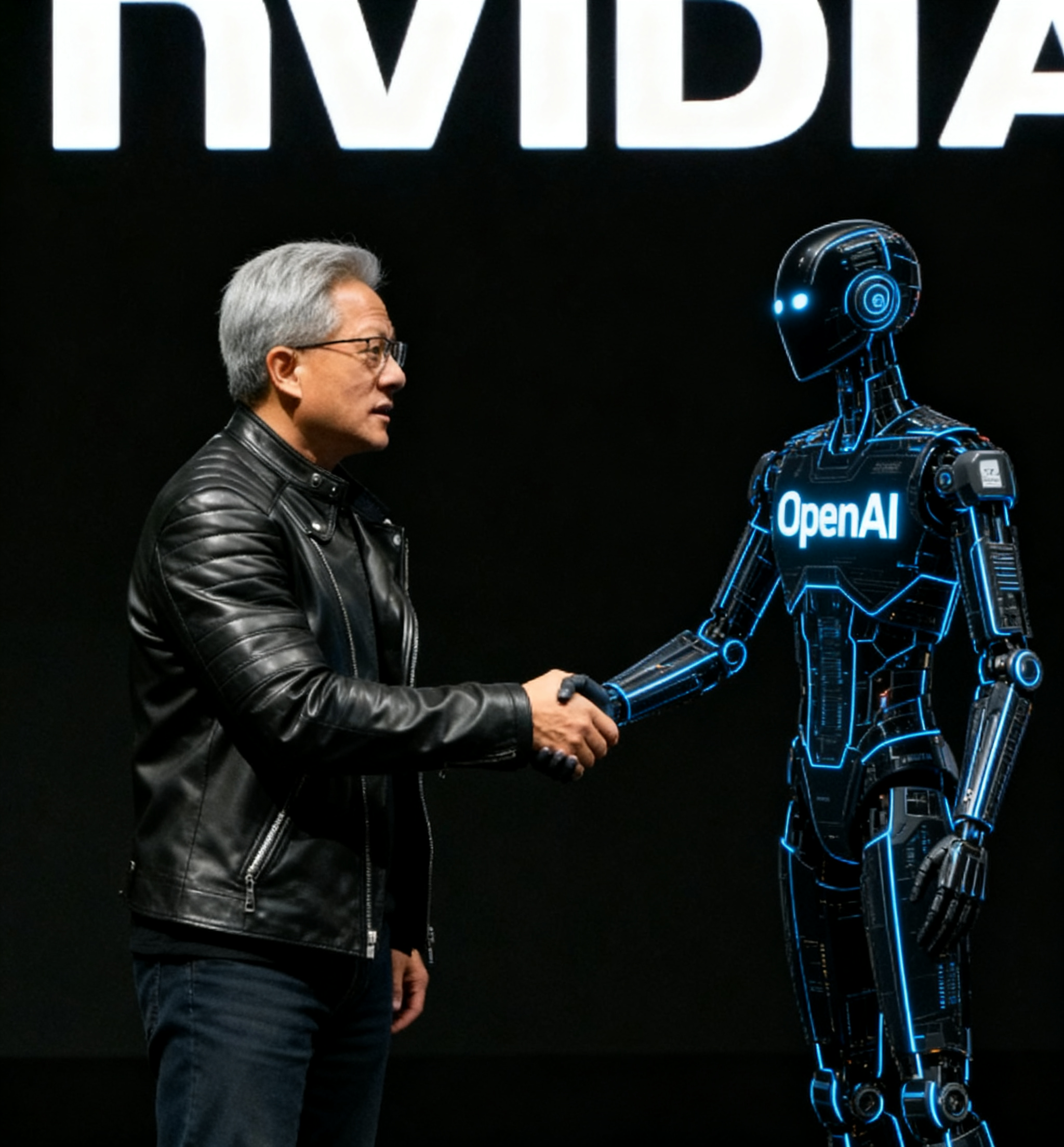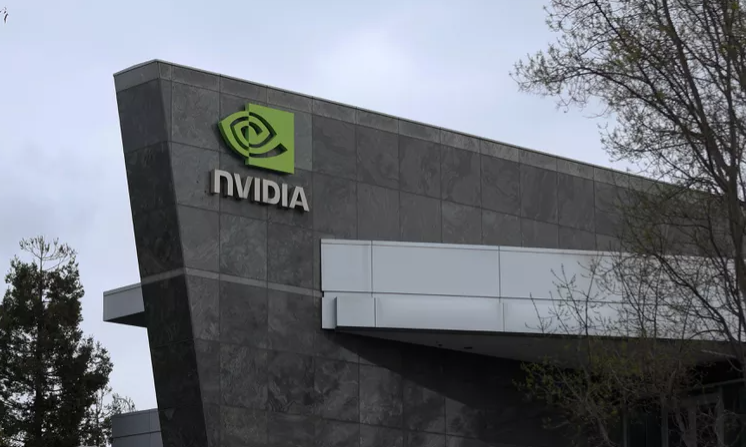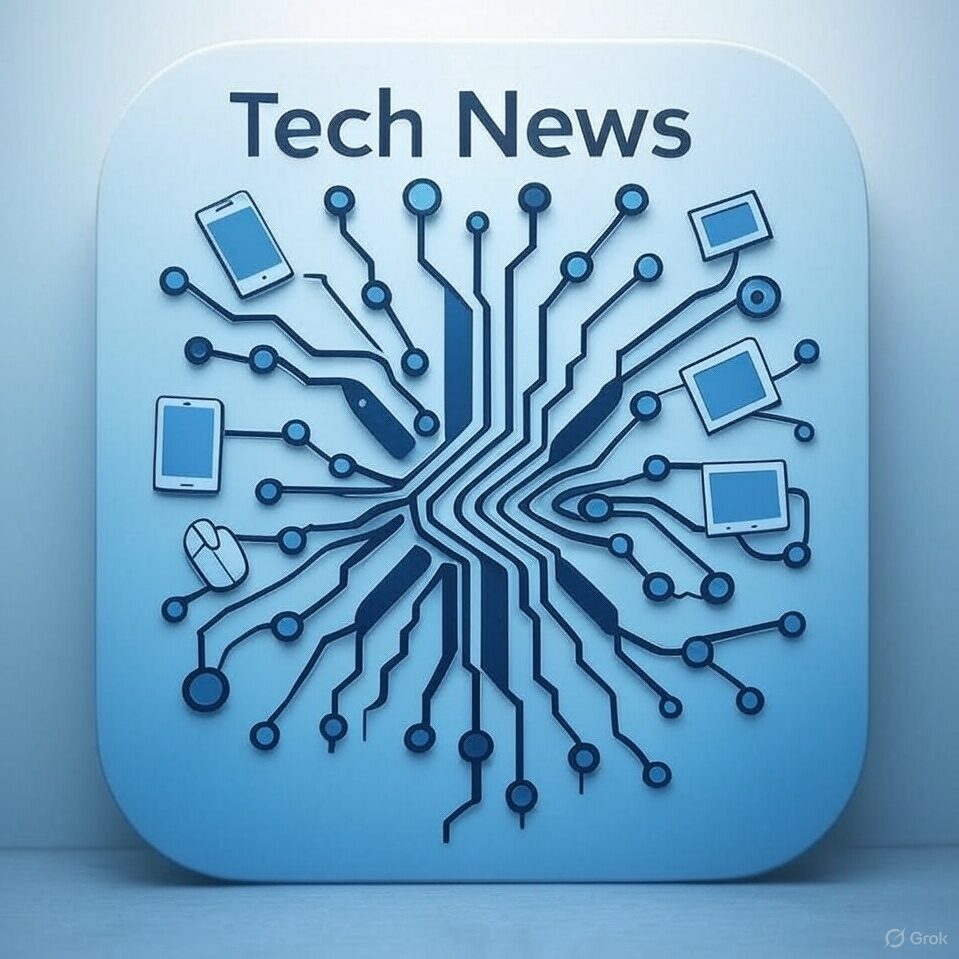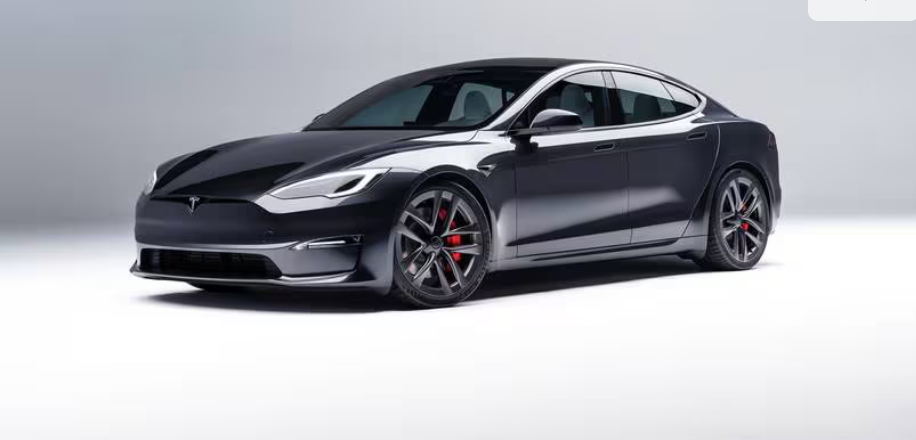
By Tech News | September 22, 2025
In a move that could redefine the boundaries of artificial intelligence, NVIDIA Corporation has announced one of the most ambitious projects in tech history. The company is committing up to $100 billion in partnership with OpenAI to deploy at least 10 gigawatts (GW) of cutting‑edge computing infrastructure.
This isn’t just another alliance it’s a seismic shift in how the world builds and scales AI. NVIDIA’s CEO Jensen Huang didn’t mince words, calling it “the biggest infrastructure project in history.”
With demand for tools like ChatGPT now surpassing 700 million weekly active users, this deal positions NVIDIA and OpenAI at the absolute epicenter of the AI boom.
Key Players: NVIDIA, OpenAI, and Their Visionary Leaders
NVIDIA: From Graphics to Global Dominance
Founded in 1993, NVIDIA began life as a graphics card company but has since transformed into the undisputed king of AI hardware. Today, its GPUs power everything from gaming and film rendering to scientific supercomputers and, crucially, the largest AI models on the planet.
Under CEO Jensen Huang, NVIDIA’s market cap has blown past $3 trillion. Huang himself has become a cultural icon in tech, known as much for his leather jackets as his visionary statements about the future of computing. Reflecting on the OpenAI partnership, he stated:
“Computing demand is going through the roof for OpenAI. Every person I know uses ChatGPT.”
OpenAI: The Brains Behind the Bots
OpenAI, founded in 2015 by Sam Altman, Elon Musk, and others, started as a nonprofit dedicated to safe AI development. In 2019, it transitioned into a capped‑profit company to secure investment while advancing its broader mission.
Since then, OpenAI has become synonymous with groundbreaking AI systems: GPT language models, DALL‑E, and others. As of July 2025, the company boasted an annualized revenue rate of $13 billion.
CEO Sam Altman, who briefly stepped down in 2023 before a dramatic return, framed the importance of the deal:
“Everything starts with compute. Compute infrastructure will be the basis for the economy of the future.”
Together, NVIDIA and OpenAI encapsulate the essential hardware‑software partnership driving the AI revolution.
Breaking Down the Deal: What Does 10GW Really Mean?

The headline number 10 gigawatts of compute is genuinely staggering. To put it in perspective:
- 1GW of power ≈ the output of a large nuclear reactor, enough to power millions of households.
- Instead of homes, this energy will drive clusters of GPUs, executing trillions of AI operations.
The investment is progressive, tied to milestones. The first 1GW deployment is expected in the second half of 2026 and will use NVIDIA’s forthcoming Vera Rubin platform a next‑generation architecture that promises exponential efficiency over today’s Blackwell GPUs.
Scaling up to 10GW will likely require millions of GPUs, enabling OpenAI to push closer to artificial general intelligence (AGI) while simultaneously serving enterprise customers and the massive global user base of tools like ChatGPT.
Importantly, while OpenAI already has partnerships with Microsoft, Oracle, and SoftBank, this deal makes NVIDIA its preferred strategic compute partnerncementing NVIDIA’s dominance in AI infrastructure hardware.
The Ripple Effects: Technology and Society
Faster AI Training and Deployment
Right now, training frontier AI models can take years. With the additional compute muscle provided by NVIDIA, those timelines may shrink to months. That means faster innovation cycles across industries:
- Drug discovery could see breakthroughs in months instead of decades.
- Climate modeling could become far more accurate, helping policymakers.
- Education could benefit from personalized tutors powered by AI.
Consumer Tech Benefits
The upgrades won’t be confined to massive data centers. Vera Rubin chips, co‑optimized with OpenAI’s systems, may yield 10x faster inference speeds, trickling down to consumer devices.
For instance, the anticipated iPhone 17’s neural engine could leverage these optimizations, blurring the line between cloud AI and on‑device AI.
Meanwhile, creative AI tools like Grok and MidJourney are bound to run faster and more efficiently, giving everyday users supercharged creative power.
Ethical and Environmental Concerns
The one major downside critics point to is energy use. 10GW is a planetary‑scale resource load, which could strain grids and demand bold new approaches to renewable energy.
At the same time, ethical questions intensify:
- Who governs AGI?
- How do we ensure it benefits everyone, not just corporations?
- And for programmers will systems like GitHub Copilot evolve into replacements or partners that elevate their role?
This debate continues in our AI vs. programmers deep dive.
Dollars and Sense: Unlocking Billions
This mega‑deal isn’t charity for either side; it’s a powerhouse business move.
NVIDIA’s Windfall
- Analysts estimate each 1GW brings in over $35 billion in GPU, networking, and maintenance revenue.
- Multiply that by 10GW, and the total comes to $350 billion in potential revenues.
- Wall Street has taken note: after the announcement, NVIDIA shares jumped nearly 4% intraday, adding tens of billions to its already massive valuation.
OpenAI’s Growth Engine
For OpenAI, the benefits are equally significant:
- Lower capital expenditures (capex) since NVIDIA will handle much of the upfront cost.
- Ability to focus on revenue growth through enterprise APIs, beyond just ChatGPT subscriptions.
- This partnership potentially doubles OpenAI’s growth trajectory.
FAQ: Your Questions Answered
Q: Is this structured as equity?
A: No. This isn’t a straight equity deal, but a progressive partnership tied to infrastructure milestones, resembling vendor financing.
Q: How big is 10GW compared to other setups?
A: Colossal. It’s roughly 10x the size of Microsoft‑backed clusters OpenAI uses today.
Q: How will it affect daily AI users?
A: Expect faster updates to free tools like ChatGPT, broader enterprise adoption, and potentially lower usage costs.
Q: When will we see the first rollout?
A: First 1GW will launch in late 2026, with the full 10GW spanning 3–5 years.
Q: What are the risks?
A: Potential energy shortages, regulatory scrutiny, and any cooling of AI‑hype cycles. But NVIDIA’s moat in AI silicon is enormous.
Final Thoughts: The Compute-Powered Horizon
This $100 billion bet represents more than corporate strategy.It’s a wager on compute as the foundation of the future economy.
- NVIDIA secures its place as the hardware titan defining AI infrastructure.
- OpenAI gains the horsepower needed to accelerate its path toward AGI.
- Society stands at a crossroads balancing faster breakthroughs with sustainability and ethics.
As Jensen Huang summarized:
“We are entering the era of intelligence.”
If this era fulfills its promise, today’s supposed “biggest project in history” may soon look quaint compared to what comes next.
Stay tuned; in a world where silicon meets superintelligence, today’s “biggest project” might soon look quaint. For more on how this intersects with mobile AI, check our iPhone 17 preview (/iphone-17-launch), or dive into emerging AI tools reshaping work (/ai-tools-guide). And if you’re pondering your coding future, our AI vs. programmers analysis (/ai-programmers-future) breaks it down without the fluff.






